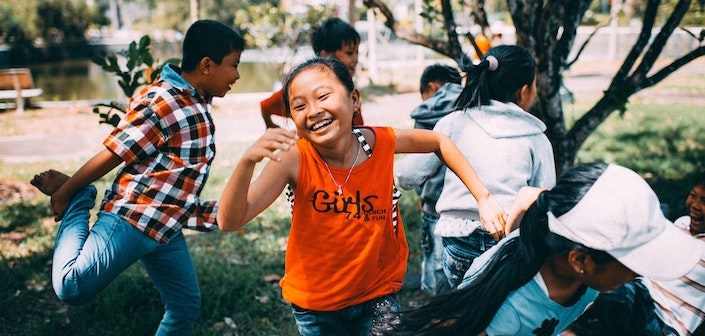The term ‘gender bias’ is thrown around quite a lot, in schools, workplaces, and the sporting arena… but what exactly does it mean, and how does it affect our children?
What is gender bias?
Bias means prejudice in favor of or against one thing, person, or group compared with another, usually in a way considered to be unfair. It can be done consciously and unconsciously in both subtle or obvious ways. Gender bias therefore can be defined as prejudice or preference of one gender over the other. Gender bias can be seen in the workplace, where women often have a lower salary compared to their male co-workers; and in the home, where women are often seen as caregivers and expected to cook and clean. Here in China, there is a historical precedent for families favoring sons rather than daughters, so pervasive that it has even resulted in a huge gender imbalance in the population.

Reinforcing gender norms can lead to body image issues for girls and violence in boys.
What are the effects of gender bias on children?
Children absorb information about what is expected in regards to gender roles in their culture from birth, which can range from the toys they play with, the color and design of the clothes they wear, to the activities they are encouraged to engage in (or not). According to Dr. Maria do Mar Pereira, author of Doing Gender in the Playground, “trying to live up to these unreal ideas of masculinity and femininity leads to a range of problems; low self-esteem, bullying, physical and verbal violence, health problems and a tragic loss of potential in our young people.”
A study by researchers at Northwestern University investigated gender bias in 4 to 5-year-old children, and found that children begin to show bias from a significantly early age. They adapt to these stereotypes and become “increasingly attuned to social category labels, social status, and the biases exhibited by family members,” according to researcher Danielle Perszyk and her colleagues.
In another experiment conducted by MullenLowe London, primary school children were asked to draw pictures of a firefighter, a surgeon, and a fighter pilot. 61 of the pictures drawn were of men, and only 5 were of women. At such a young age, it is evident that children have formed biases against women. Three females with the above occupations were invited into the classroom and the first reaction from the surprised children was, “Fake. They’re dressed up.” The students initially couldn’t believe that the women were firefighters and surgeons etc.
Clearly, children begin to ‘learn’ about gender roles from a very young age. So what can we do if we want to counteract these beliefs?

Have open discussions about gender biases with your child
Discussing bias with your children
Educating kids on matters such as gender bias is crucial to their social development and identities, and how they will perceive others around them. Via children’s literature, you can introduce the topic of inequity and bias to your child. There are a variety of children books that illustrate bias and diversity, encouraging readers to stand up to the many injustices in the world. Check out this blog for recommendations of children’s books that promote gender equality.
Beyond that, have discussions with your children, provide examples of bias, and encourage them to think of solutions. Take advantage of your child’s interest in books, toys, games, and TV, and point out examples of injustice and bias and explain why they need to fight against these inequalities.
KEEP READING: Eh, What’s up Doc?: The Search for the Perfect Pediatrician
Photos by Tim Mossholder, and MI PHAM via Unsplash, Ketut Subiyanto on Pexels



